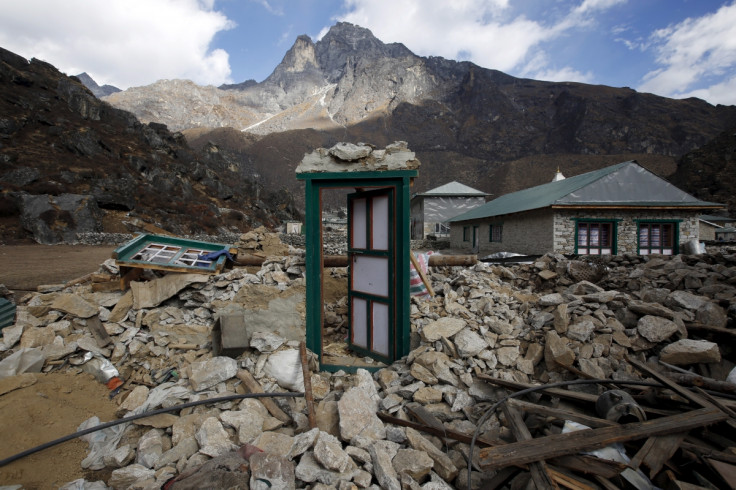Nepal earthquake: Cataclysm looms as 2015 disaster did not unleash full tectonic fury

Nepal could suffer another major earthquake, and soon. Researchers have found that the slip from the Gorkha earthquake stopped at a depth of 11km along the fault that runs beneath Kathmandu, releasing the only half of the built-up tension.
Their study shows that the upper section of the fault did not rupture during the 7.8 magnitude earthquake on 25 April 2015. Usually when this happens earthquakes reoccur within a few decades, as opposed to centuries when the a fault fully ruptures.
"Using the high-resolution satellite images, we have shown that only a small amount of the earthquake reached the surface," said John Elliot, lead author of the paper. "This is surprising for such a big earthquake, which we would normally expect to leave a major fault trace in the landscape."
The research showed that the rupture was a result of a slip starting on the fault at a depth of 15km. However, it only reached a depth of 11km, due to previous damage on the fault around Kathmandu caused by the interaction between other fault lines. This means that the upper half of the fault is yet to rupture, and is continuing to build up pressure as Indian Plate underthrusts the Eurasian Plate.
"The upper part of the fault that has not yet broken – above 11km – is over 50km wide," Elliot told IBTimes UK. "Therefore, the April earthquake has only broken about 50% of the total potential fault area around Kathmandu that breaks in earthquakes over the long period. There is the potential for the shallower portion of the fault to break in the future, but we cannot say when."
The study, published in Nature Geoscience, also showed that the fault beneath Nepal has a 'kink' in it. This has made a slope 20km down, with material constantly pushing up. This is the new material forming the Himalayan Mountains.
"The earthquake itself then reversed this, dropping the mountains back down again when the pressure was released as the crust suddenly snapped in April 2015," explained Elliot. "The highest peaks dropped by up to 60cm in the first seconds of the earthquake."
The 2015 earthquake killed nearly 9,000 people. That is more than the population of the UK town Glastonbury in Somerset.
© Copyright IBTimes 2024. All rights reserved.






